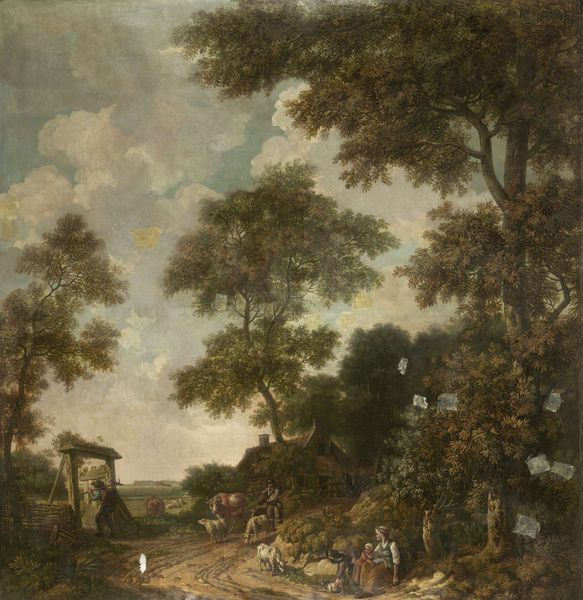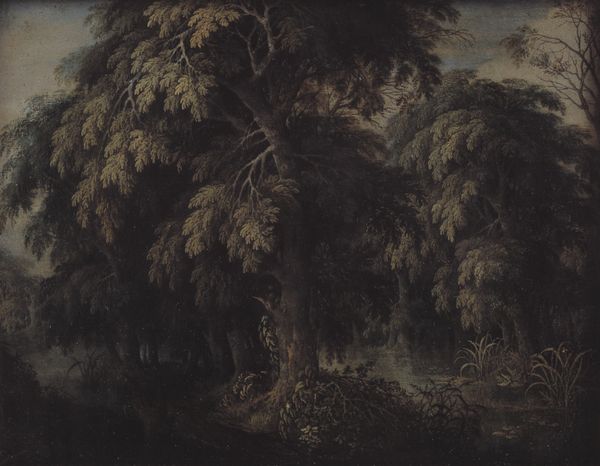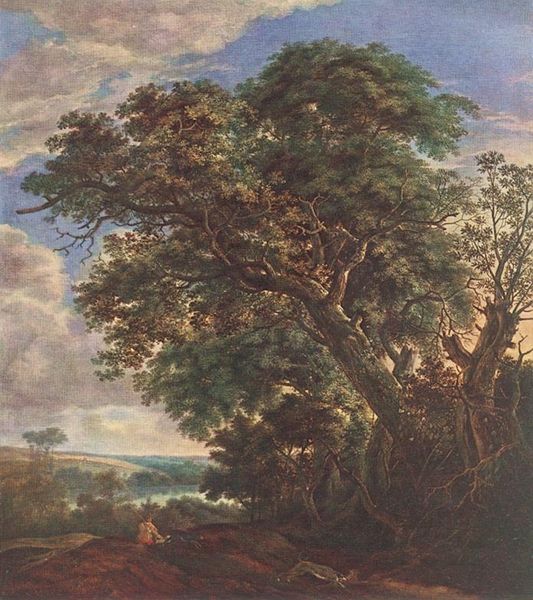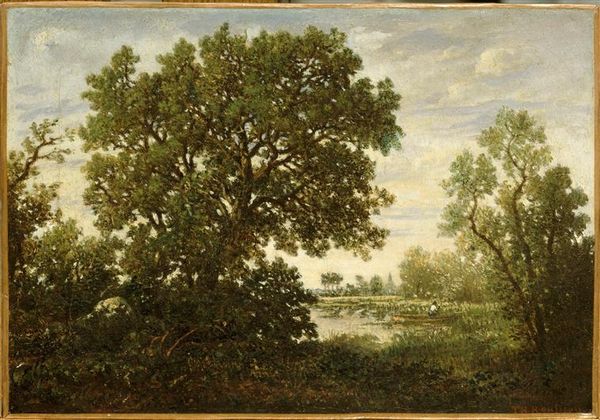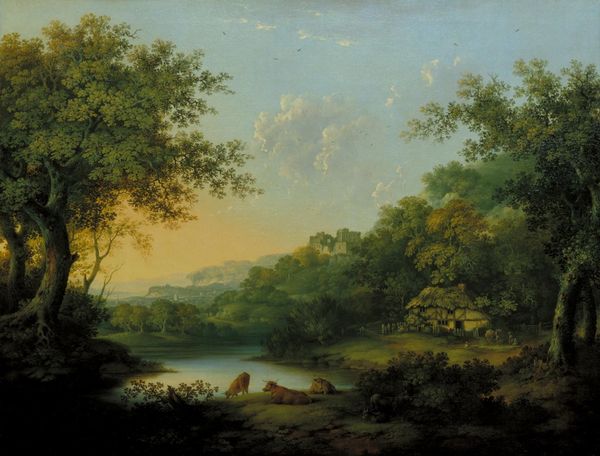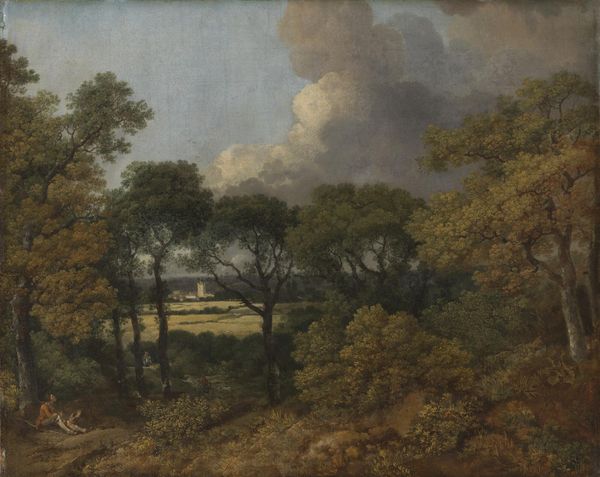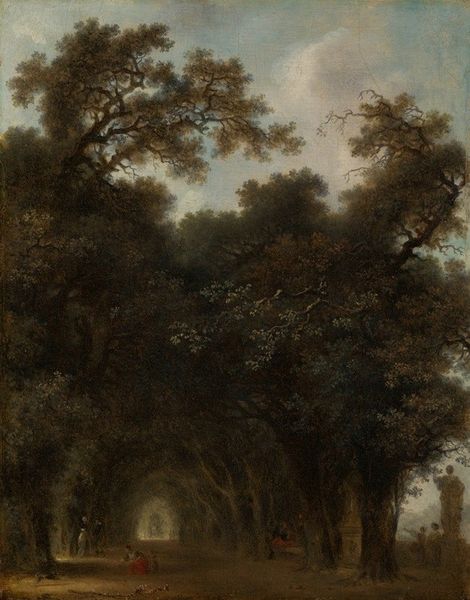
Dimensions: height 326 cm, width 124.5 cm
Copyright: Rijks Museum: Open Domain
These three wall hangings were made by Jurriaan Andriessen in the late 18th century, using paint on linen. These are not simply paintings, but decorative elements intended to reshape the experience of an interior. Considered this way, the choice of material becomes especially important. The weave of the linen provides a subtle texture that softens the illusionistic landscape depicted. But more than that, the artist has carefully considered the qualities of paint, and the labor involved in applying it. The scenes suggest leisure – boating, strolling – but the paintings themselves were undoubtedly the result of painstaking work. Andriessen was part of a generation of artists who blurred the boundaries between fine art and decoration, and between handcraft and design. By understanding how these wall hangings were made, and their intended function, we can appreciate them as more than just pretty pictures. They are artifacts of a particular moment in history, when ideas about art, labor, and social class were rapidly changing.
Comments
rijksmuseum about 2 years ago
⋮
From c. 1770 it became fashionable to cover the walls of rooms with painted wall hangings. With their idyllic scenes, they could transform a canal house room into an oasis. These three paintings (together with some missing ones) presented a continuous Dutch landscape, interrupted only by the room’s panelling, windows and doors. They were made for a room in the house at 22 Nieuwe Doelenstraat, Amsterdam.
Join the conversation
Join millions of artists and users on Artera today and experience the ultimate creative platform.

